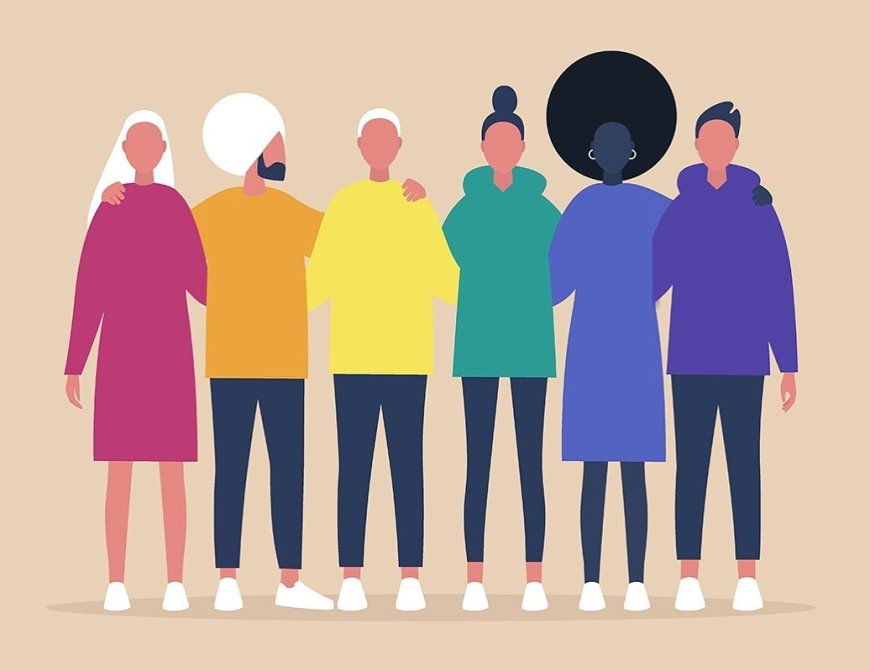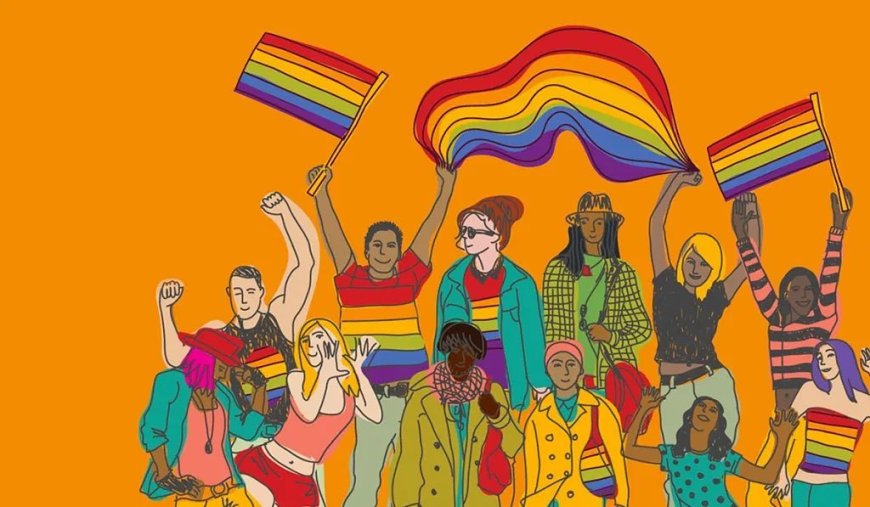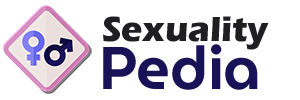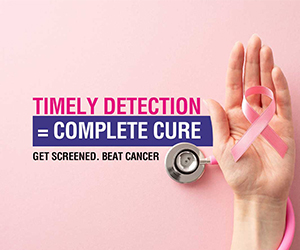LGBTQ+ Terminology Guide: Understanding Identity and Orientation Language
Navigate LGBTQ+ terminology with confidence through comprehensive definitions of sexual orientation, gender identity, and community-specific language and concepts.

Language is a powerful tool that shapes understanding, builds community, and affirms identity. In LGBTQ+ contexts, terminology serves not only as a means of communication but as a way to validate experiences, create belonging, and advocate for recognition and rights. This comprehensive guide provides current, respectful definitions of LGBTQ+ terminology while acknowledging that language evolves continuously as communities develop new ways to describe their experiences. Understanding this terminology is essential for creating inclusive environments, providing supportive services, and engaging respectfully with LGBTQ+ individuals and communities.
Sexual Orientation Terminology
Core Sexual Orientations
Gay typically refers to men who are romantically and sexually attracted to other men, though it can be used as an umbrella term for anyone who experiences same-sex attraction. The term has been reclaimed by the community from its historical use as a slur and is now the preferred terminology over clinical terms like "homosexual."
Lesbian refers specifically to women who are romantically and sexually attracted to other women. This term carries cultural and political significance within women's communities and represents not just sexual orientation but often a cultural identity and community affiliation.
Bisexual describes attraction to more than one gender, often defined as attraction to both one's own gender and other genders. Bisexuality challenges binary thinking about sexuality and encompasses a wide range of attraction patterns and relationship configurations.
Pansexual refers to attraction to people regardless of their gender identity, emphasizing that gender is not a determining factor in romantic or sexual attraction. This term explicitly acknowledges non-binary and gender-diverse identities in ways that some find more inclusive than bisexual.
Queer serves as both an umbrella term for all LGBTQ+ identities and a specific identity that rejects categorical labels. Originally used as a slur, queer has been reclaimed by many community members as a proud identifier, though not all LGBTQ+ people are comfortable with this term due to its historical use.
Asexual describes people who experience little to no sexual attraction to others, though they may still experience romantic attraction and desire intimate relationships. Asexuality exists on a spectrum with various sub-identities that describe different experiences of attraction and desire.
Romantic Orientation Terms
Romantic attraction can differ from sexual attraction, leading to terminology that describes romantic feelings separately from sexual desire. These terms often parallel sexual orientation terms but focus specifically on emotional and romantic connections.
Aromantic describes people who experience little to no romantic attraction to others, regardless of their sexual orientation. Aromantic people may still form deep, meaningful relationships but don't typically experience the romantic feelings associated with traditional relationship models.
Demiromantic refers to people who only develop romantic attraction after forming strong emotional bonds with others. This identity acknowledges that romantic attraction doesn't always occur immediately or based solely on initial attraction.
Gray-romantic or greyromantic describes people who experience romantic attraction rarely, under specific circumstances, or with low intensity. This term acknowledges the spectrum of romantic experience between aromantic and alloromantic (experiencing romantic attraction).
Asexuality Spectrum Terms
The asexuality spectrum includes various identities that describe different experiences of sexual attraction and desire, recognizing that asexuality is not a monolithic experience.
Demisexual refers to people who only experience sexual attraction after forming strong emotional bonds with others. This identity challenges assumptions about immediate sexual attraction and emphasizes the importance of emotional connection.
Gray-asexual or graysexual describes people who experience sexual attraction rarely, under specific circumstances, or with low intensity. This term acknowledges that sexual attraction exists on a continuum rather than as a binary experience.
Aceflux describes people whose experience of sexual attraction fluctuates over time, sometimes feeling strongly asexual and other times experiencing sexual attraction to varying degrees.
Gender Identity and Expression
Core Gender Identities
Transgender refers to people whose gender identity differs from the sex assigned to them at birth. This umbrella term encompasses various specific identities and experiences while emphasizing that gender identity is distinct from biological sex.
Cisgender describes people whose gender identity aligns with the sex assigned to them at birth. This term provides language for the majority experience while avoiding treating cisgender identity as "normal" and transgender identity as deviant.
Non-binary encompasses gender identities that don't fit exclusively into male or female categories. Non-binary people may experience their gender as a combination of male and female, as neither, as fluid between genders, or as entirely outside the gender binary.
Genderfluid describes people whose gender identity changes over time, potentially shifting between different gender identities or expressions. This identity acknowledges that gender can be dynamic rather than fixed throughout life.
Agender refers to people who don't identify with any gender or who experience an absence of gender identity. This identity challenges assumptions that everyone has a gender identity and validates experiences of gender neutrality.
Genderqueer is an umbrella term for gender identities that challenge binary gender categories. Like queer, this term has been reclaimed from potential negative usage and serves as both a specific identity and a broader category.
Gender Expression Terms
Gender expression describes how individuals present their gender through clothing, behavior, voice, and other characteristics. These expressions may or may not align with someone's gender identity or societal expectations.
Androgynous refers to gender expression that combines or balances masculine and feminine characteristics, or that avoids clearly gendered presentation. This expression challenges binary gender expectations and can be adopted by people of any gender identity.
Femme describes gender expression that emphasizes traditionally feminine characteristics, often used within LGBTQ+ communities to describe presentation that may differ from mainstream femininity. Femme can be claimed by people of various gender identities.
Butch refers to gender expression that emphasizes traditionally masculine characteristics, particularly within lesbian communities where it represents a specific cultural identity and presentation style with historical significance.
Transition-Related Terminology
Gender transition encompasses the various steps transgender people may take to align their external presentation and social recognition with their gender identity. Transition is highly individual and may include social, medical, and legal components.
Social transition involves changing name, pronouns, clothing, and social roles to align with one's gender identity without necessarily involving medical interventions. This process often represents the first step in gender transition.
Medical transition may include hormone therapy, surgeries, and other medical interventions to align physical characteristics with gender identity. Not all transgender people choose medical transition, and the specific interventions chosen vary based on individual needs and circumstances.
Gender dysphoria describes the distress that may occur when there's a mismatch between gender identity and sex assigned at birth. Not all transgender people experience dysphoria, and its presence is not required for transgender identity.
Gender euphoria refers to the positive feelings that may occur when gender expression aligns with gender identity. This term emphasizes positive aspects of gender identity rather than focusing solely on distress or dysphoria.

LGBTQ+ Community and Culture Terms
Community Identity Terms
Chosen family refers to close relationships formed by choice rather than biological connection, particularly important in LGBTQ+ communities where family rejection may occur. Chosen families provide support, love, and belonging that may be missing from biological families.
Coming out describes the ongoing process of disclosing LGBTQ+ identity to others, recognizing that this is not a one-time event but a continuous decision made in various contexts throughout life. Coming out experiences vary greatly based on individual circumstances and safety considerations.
Passing refers to being perceived as a particular gender by others, most commonly used to describe transgender people being recognized as their affirmed gender. While often desired for safety and affirmation, passing shouldn't be considered necessary for valid transgender identity.
Visibility describes being open about LGBTQ+ identity in various contexts, recognizing that visibility involves both opportunities and risks that vary significantly based on individual circumstances and social environment.
Historical and Cultural Terms
Two-Spirit is a term used by some Indigenous North American people to describe individuals who embody both masculine and feminine spirits. This term represents traditional Indigenous understandings of gender diversity and shouldn't be used by non-Indigenous people.
Lavender menace refers to the historical tension between feminist and lesbian movements, originating from a 1970 protest that highlighted lesbian visibility within women's liberation movements.
Stonewall refers to the 1969 riots at the Stonewall Inn in New York City, widely considered the catalyst for the modern LGBTQ+ rights movement. Stonewall represents resistance against police harassment and discrimination.
Relationship and Family Terms
Relationship Configurations
Polyamory describes the practice of engaging in multiple romantic relationships with the knowledge and consent of all involved parties. This relationship style challenges assumptions about monogamy while emphasizing ethical non-monogamy.
Monogamy refers to exclusive romantic and/or sexual relationships between two people, representing the culturally dominant relationship model in many societies while acknowledging it as one choice among many.
Relationship anarchy rejects traditional relationship categories and hierarchies, instead allowing relationships to develop organically based on the needs and desires of the people involved without predetermined expectations or rules.
Family and Parenting Terms
Rainbow families refers to families headed by LGBTQ+ parents or that include LGBTQ+ members, celebrating the diversity within family structures and challenging traditional definitions of family.
Donor refers to individuals who provide genetic material for assisted reproduction, important terminology for LGBTQ+ couples and individuals building families through various reproductive technologies.
Co-parenting describes shared parenting responsibilities between multiple adults who may or may not be in romantic relationships with each other, reflecting diverse family structures within LGBTQ+ communities.
Identity Development and Intersectionality
Identity Process Terms
Questioning describes people who are exploring their sexual orientation or gender identity without having reached definitive conclusions. This term validates the process of identity exploration as legitimate regardless of eventual outcomes.
Fluidity acknowledges that sexual orientation and gender identity may change over time for some individuals, challenging assumptions that these aspects of identity are always fixed throughout life.
Compulsory heterosexuality describes the social assumption that heterosexuality is universal and natural, leading to pressure on individuals to conform to heterosexual norms regardless of their actual attractions or identity.
Intersectional Identities
Intersectionality recognizes that individuals hold multiple identities that interact to create unique experiences, particularly important for understanding how race, class, disability, and other factors affect LGBTQ+ experiences.
QTPOC (Queer and Trans People of Color) acknowledges the specific experiences of LGBTQ+ individuals who also hold racial or ethnic minority identities, recognizing unique challenges and forms of discrimination.
Homonationalism describes the co-optation of LGBTQ+ rights for nationalist purposes, often used to justify discrimination against other groups while claiming progressive values.

Contemporary and Emerging Terms
Digital Age Terminology
Online identity describes how LGBTQ+ people navigate identity expression in digital spaces, including social media, dating apps, and online communities that may provide safety and connection not available offline.
Digital coming out refers to disclosing LGBTQ+ identity through digital platforms, recognizing new opportunities and challenges presented by social media and online communication.
Medical and Health Terms
Informed consent refers to healthcare models that allow transgender adults to access hormone therapy and other medical care based on their own informed decision rather than requiring extensive psychological evaluation.
Gender-affirming care describes medical and mental health services that support transgender and gender-diverse individuals in aligning their physical characteristics and social recognition with their gender identity.
Activism and Rights Terms
Marriage equality refers to legal recognition of same-sex marriage, representing a major victory in LGBTQ+ rights while acknowledging ongoing challenges beyond marriage recognition.
Conversion therapy describes harmful practices that attempt to change sexual orientation or gender identity, widely condemned by medical and mental health organizations as ineffective and potentially harmful.
Anti-discrimination protections refer to laws and policies that protect LGBTQ+ people from discrimination in employment, housing, healthcare, and other areas of life.
Respectful Usage Guidelines
Language Evolution
LGBTQ+ terminology continues to evolve as communities develop new language to describe their experiences. Staying current requires ongoing education and listening to community voices rather than assuming that terminology learned at one time remains unchanged.
Generational differences in terminology use mean that different age groups within LGBTQ+ communities may prefer different terms. Respecting these differences while understanding historical context helps bridge generational divides.
Regional and cultural variations in terminology reflect the global diversity of LGBTQ+ experiences, requiring sensitivity to local contexts and community preferences rather than assuming universal terminology use.
Best Practices
Self-identification remains the most important principle in using LGBTQ+ terminology respectfully. Individuals are the experts on their own identity, and respectful communication honors their self-understanding and chosen terminology.
Asking for guidance when unsure about appropriate terminology demonstrates respect and willingness to learn rather than making assumptions that may be incorrect or offensive.
Correcting mistakes gracefully when terminology errors occur helps maintain relationships while demonstrating commitment to respectful communication and ongoing learning.
Creating Inclusive Environments
Understanding LGBTQ+ terminology serves the broader goal of creating inclusive environments where all individuals feel welcomed, respected, and valued. This requires not just learning definitions but understanding the experiences and contexts that give meaning to these terms.
Professional settings, educational institutions, healthcare environments, and community organizations all benefit from staff and community members who understand LGBTQ+ terminology and can use it respectfully and appropriately.
The ultimate purpose of this terminology guide is to support authentic relationships, inclusive communities, and equitable treatment for all individuals regardless of their sexual orientation or gender identity. Language serves as a bridge to understanding, connection, and justice for LGBTQ+ people and their allies.











